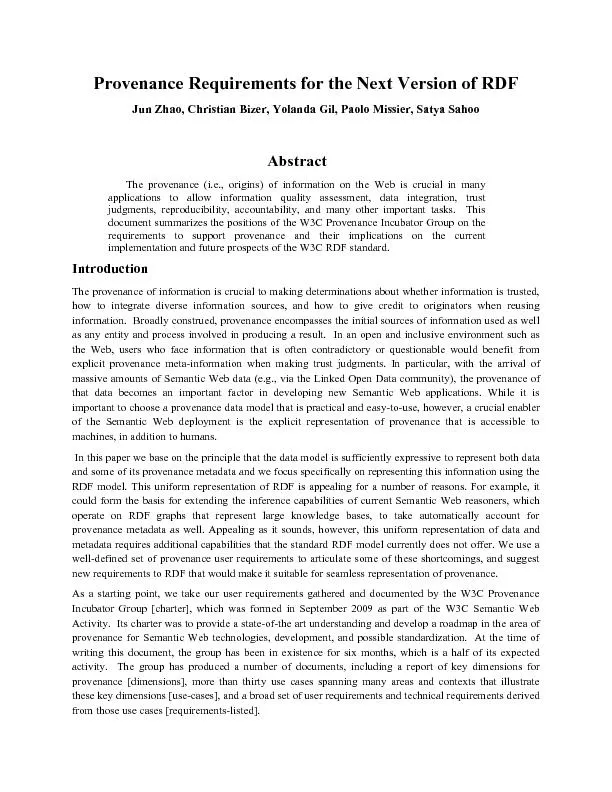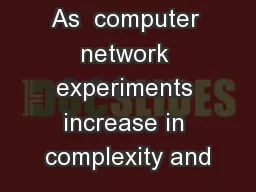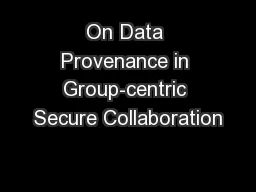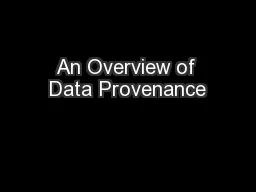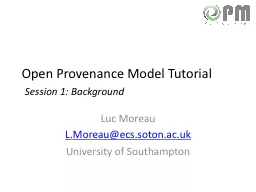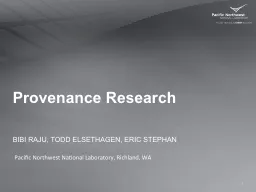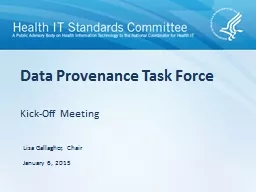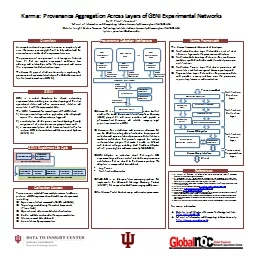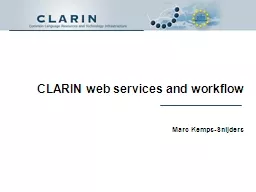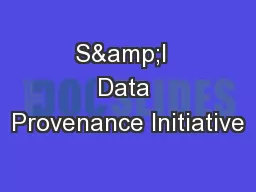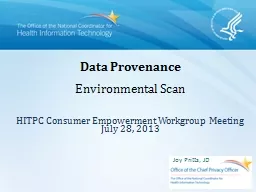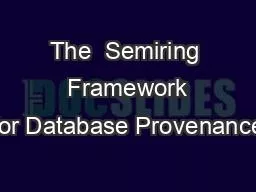PDF-rt provenance and their implications on the current implementation and
Author : karlyn-bohler | Published Date : 2016-07-15
briefly outlines the current state of the art in representing provenance information in RDF and lists current approaches to extend RDF for the better representation
Presentation Embed Code
Download Presentation
Download Presentation The PPT/PDF document "rt provenance and their implications on ..." is the property of its rightful owner. Permission is granted to download and print the materials on this website for personal, non-commercial use only, and to display it on your personal computer provided you do not modify the materials and that you retain all copyright notices contained in the materials. By downloading content from our website, you accept the terms of this agreement.
rt provenance and their implications on the current implementation and: Transcript
Download Rules Of Document
"rt provenance and their implications on the current implementation and"The content belongs to its owner. You may download and print it for personal use, without modification, and keep all copyright notices. By downloading, you agree to these terms.
Related Documents

